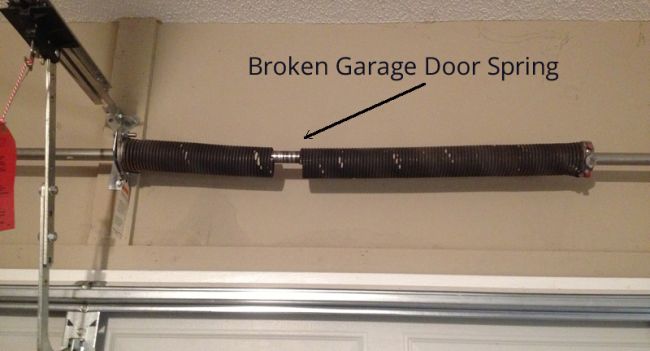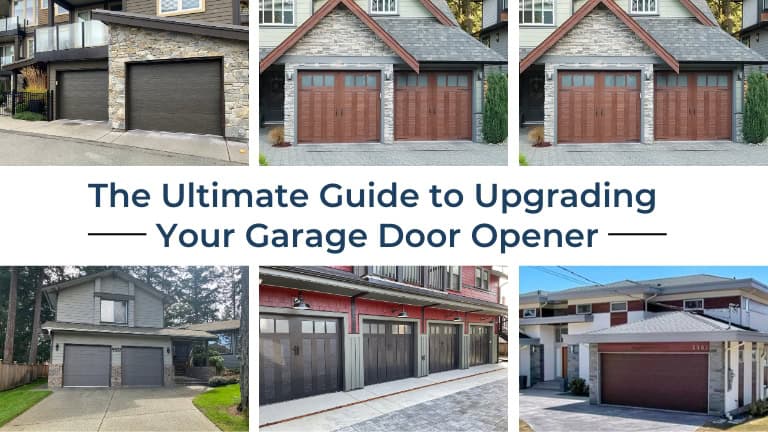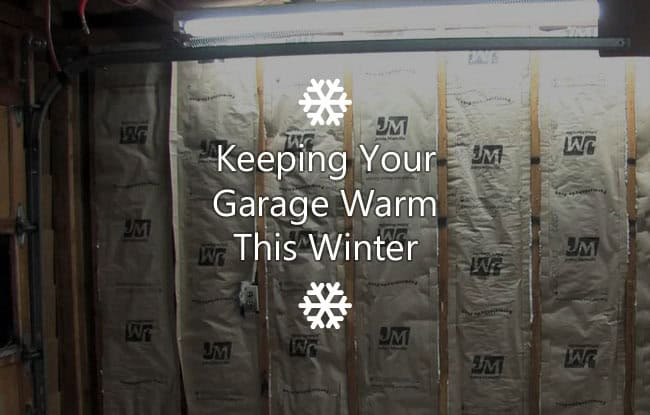We’ve all experienced common garage door problems. If you’ve noticed your garage is making a lot of noise, looking uneven or performing at a slower rate than usual, there’s probably a thing or two you can do to fix it.
If you’re experiencing garage door issues, we’ve laid out some standard solutions and highlighted when you should contact a professional for further assistance.
1. Trouble Opening or Closing
Your garage should make your life easier, and nothing is worse than being stuck behind the door. If you’re experiencing this issue, there are a couple of DIY garage fixes you can try.
Test It Out
Your door may not be functioning because it is off balance. Turn off the power supply and manually lift the door to test the balance. If it stays in place, it is balanced and on track. If it doesn’t, you may have an underlying issue.
The problem could also be with the fuse. If you have checked all batteries and your door isn’t moving, you might have a fuse down. However, if other lights in your home are still working, there may be a larger issue with the door opener.
If you’ve tried these quick tests and your door still isn’t opening or closing, contact a professional to do garage door repair.
2. Blocked Sensors
If you’re having difficulty opening or closing your door, it could be because some sensors are covered or obscured.
Fix Signals
To ensure your remote and door work on-demand, you’ll need to check for places where obstacles might be blocking signals.
When using your remote, make sure no branches or plants block the sensor.
You’ll also want to check the antenna for any dirt or build-up that could be blocking the signal. Sometimes the antenna can also become unaligned — a quick fix is to readjust it.
3. Broken Springs
When extension or torsion springs snap, your garage door can drop quickly.
Get New Springs
The springs in your system will tap out after performing so many cycles, causing them to snap. Keep your springs’ lifespan in mind, and contact a professional to replace them when necessary. If your springs snap while in use, your door can slam down and cause damage to your vehicle or harm another person.
If you hear your springs snap when not in use, do not try to open your garage because the system can fire the springs off as projectiles and cause injury.
4. Roller Issues – Garage Door Roller Issues
The rollers in your system will last for different periods depending on whether they are plastic, steel or nylon.
Refresh or Replace
Old or rusted rollers can cause problems with opening your door. The first thing you’ll want to do is lubricate them. If they are still causing issues, you may need to replace them.
Rollers will typically only work until they reach their max cycle limit. Keep track of when your rollers are coming up on the end of their limitation to ensure you can replace your rollers seamlessly.
5. Dying Opener
Your garage door opener allows you to utilize your garage efficiently every time you need it. If your opener is 20 years old or more, it’s likely outlived its lifespan.
Update and Replace
Do some garage door opener troubleshooting by checking the batteries, getting within proximity of the garage and clearing the path of your antenna.
If you’re still experiencing issues with your opener, the likely culprit is a dying motor. If your motor is old or overheating, it won’t respond the way it should.
You should always hire a professional to install a garage door opener to ensure you don’t harm yourself or others or damage your door.
6. Unusual Noises
Hearing a series of unusual noises is a huge indicator you have an underlying issue. Some may be minor, while others require immediate and professional attention. Your door may make a variety of noises depending on the issue. Some issues and noises they might produce include:
- Loose chains: slapping
- Loose rollers: grinding, squeaking and squealing
- Loose nuts and bolts: vibrating and rattling
- Rust: clinking
- Broken springs: popping and rumbling
- Alignment: banging, straining, scraping and rubbing
If you’re unsure about the sound you’re hearing or where it’s coming from, it is best to contact a professional to conduct garage door troubleshooting.
7. Uneven Door
Sometimes you’ll notice that your door is looking odd or moving unevenly. In this case, there are a few areas to check.
Fix Alignment
Sometimes an uneven door is caused by something blocking the way, so make sure you’ve removed all obstacles from the door’s path.
Rust can cause one side of your door to move faster than another. A good wipe-down can sometimes fix this issue.
You can also check your manual to ensure you’ve all of your limits on the appropriate settings, which will help to make sure the door fully closes and doesn’t malfunction.
If the problem lies in the spring system, be sure to contact a professional and limit your door use. Snapped springs can be hazardous and cause serious injury.
8. Slow Opening
Slowly opening doors can easily be a source of frustration, and there are a few reasons it might be happening.
Clean and Lubricate
You want to examine your rollers to ensure they aren’t dried out. You’ll also want to evaluate the condition of your tracks. If you notice a lot of dirt, you’ll need to clean them off.
Keeping your tracks and rollers well lubricated will ensure they continue to move smoothly. These parts are more susceptible to drying out faster in places where the weather gets extremely hot or cold.
As a general rule of thumb, plan to give your system regular maintenance at least twice a year.
9. Transmitter Problems
Your remote control should be able to open your garage door effortlessly, but sometimes this doesn’t always happen.
Replace Batteries
Fixing your transmitter problems is a quick fix that typically involves a simple battery change.
First, you’ll want to test the transmitter inside your garage to know where your problem lies. If the door doesn’t open, you have an underlying problem. However, if it does open, your batteries are probably dead.
Changing the batteries usually involves removing the back of the remote (in some cases with a screwdriver). You always want to ensure the batteries face the correct direction to avoid thinking a problem lies elsewhere when the remote doesn’t work.
10. Keypad Not Synced
A garage keypad offers security and comfort for many homeowners. If your door isn’t opening when you type in your code, it’s likely not synced.
Refer to the Manual
Syncing your keypad is a simple fix that you can do in minutes.
First, you should check the batteries. There’s a chance they’ve died, meaning you need a quick change.
Next, you’ll need to refer to the user manual to know what steps to take to sync the keypad and remote properly. If you have persisting issues, you can call your manufacturer for more information.






